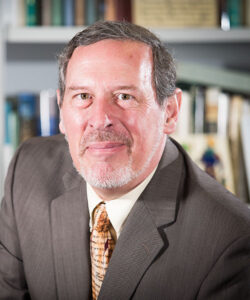I began my college career in the fall of 1968 as a first-generation college student. Although I had been admitted to the University of Missouri, I did not have the financial support needed to live in the resident hall, pay for a meal ticket, and cover tuition and books costs. Therefore, I lived at home in Joplin while attending Missouri Southern State University (then Missouri Southern State College).

My family could not afford to contribute to my college tuition or other costs, but I had a marching band scholarship that helped some, and I worked about 25 hours per week as a theater projectionist. Because of my busy schedule, I had no student activities other than the band and my membership in Phi Alpha Theta (an honor society for Junior College students – something still in place at MSSU at that time since the school had just transitioned from a two-year to a 4-year institution). I majored in History and for the first time had the chance to work with professors who really understood my passion for the subject.
After five semesters at MSSU, I married and transferred to Missouri State University (then SMSU). I was fortunate to take an ancient history class with Dr. James Moyer and that set me on the path that eventually lead to applying to graduate school with the intent of studying ancient Near Eastern history. Of course, I was not prepared to compete with other applicants at that point, but I was able to take Hebrew classes at Evangel University and I completed a minor in Religious Studies in my last three semesters before graduation. With a strong recommendation from Dr. Moyer, I was accepted into several universities and eventually received an offer that covered all tuition costs at Brandeis University in Waltham, MA. Of course, that entailed a move across the country, settling into a new community, and finding a job for my wife, who is a nurse.
Looking back, I wonder at the courage we had in taking this step since neither of us had ever even traveled by plane before and driving across half of the United States was a daunting task for two people just turned 21 years of age. What made it possible, other than seeing the opportunity that we had been given, was the welcoming we received from my major professor, Dr. Dwight Young, and his wife and the other graduate students in the department of Near Eastern and Judaic Studies. It took me five years (1972-1977) to complete my doctorate, an accomplishment that then lead eventually to a teaching career, first as a visiting scholar at Clemson University, then at Anderson College, and finally in 1984 at Missouri State University. With this as background, I have over my 36-year career at MSU tried to assist other first-generation students to reach their educational and life goals.
Dr. Victor H. Matthews, Dean College of Humanities and Public Affairs